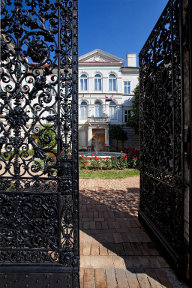BETWEEN EAST AND WEST: CHURCH AND SOCIETY ON CROATIAN TERRITORIES FROM LATE ANTIQUITY UNTIL MODERN TIMES
Abstract
Primary objective of the project is to conduct fundamental and revisionary research of unresolved and disputable issues in the pre-modern history of Croatian people and to create indispensable multiple synthesis of this particular segment of Croatian history in the social and political context of the area where East encountered West, where Eastern Byzantine civilization encountered Western – Roman civilization.
The final objective – synthesis will be preceded by various researches of preserved published and unpublished materials, and valorisation of recent historiographic knowledge in the following segments:
- mobility of both ecclesiastic and secular elites, and population in general
- (re)valorization of sacral, architectural and cultural heritage in the context of East vs. West
- connection between political and ecclesiastic geography (topography)
Elaboration of general objective
During the centuries, territory of modern Croatian state has been a part of different state entities. This undoubtedly influenced formation of Croatian culture in a multicultural environment. For a long time, and for many reasons, history of Church was not systematically studied in Croatian historiography, lacking the modern and adequate historiographic approach and methodologies. At the same time, the Church itself played the key role in the formation of almost all social, political and intellectual processes in the Croatian territories during the entire pre-modern period and significant part of the modern times. Therefore the focus of this project shall be on the study of relations between Church and society in the time span from medieval until modern times, and in the context of Croatia as a meeting point between East and West.
Church officials from Croatia pursued their carriers within the framework of Austro – Hungarian Kingdom, Republic of Venice and Habsburg Monarchy. Adapting to the political boundaries of these entities, they activities linked Croatian territories with the seat of Western Christianity in Rome through their activities. A the same time, marginal position of Croatian countries made Croatian territories and social communities subject to influences from the European East. It has to be stressed that the vast array of topics from this field has not been explored and researched in Croatian historiography; materials from local and Vatican archives about ecclesiastic, social and cultural history of foremost ecclesiastic, but also of other institutions, remain for most part unpublished and unexplored.
On the other hand, in foreign historiographies the relation (the clash and the cohabitation) between East and West has been rather thoroughly studied on the level of political and to some extent cultural relations (and transfers), while the reflections of these processes on Croatian territories remain completely undisclosed to wider historiographic community. Therefore, the results of this project – given their publication in English (and other foreign languages) – would fill a void in foreign historiographies regarding the social, political and partly economic processes in the space where East and West encountered, i.e. the territories of medieval Kingdom of Hungary and Croatia and marginal eastern parts of later Habsburg monarchy, i.e. Austro – Hungary.

